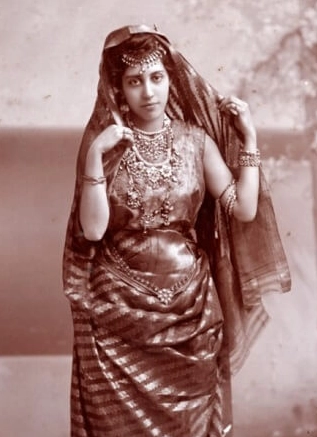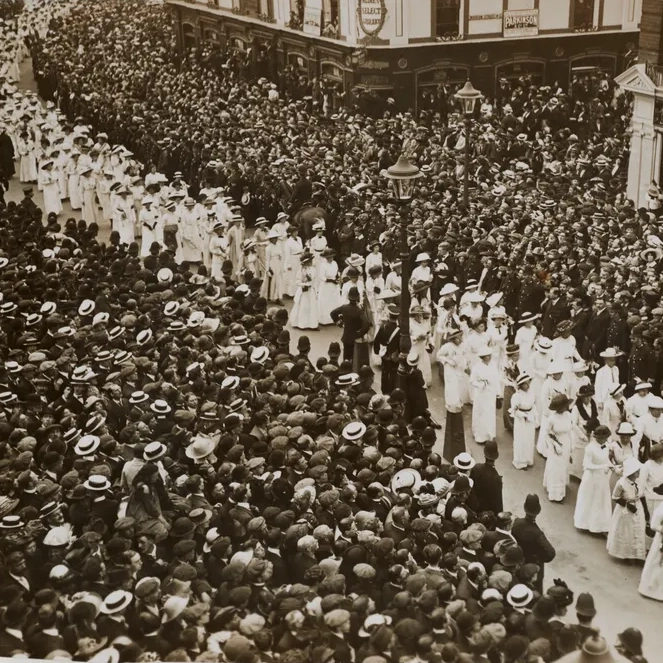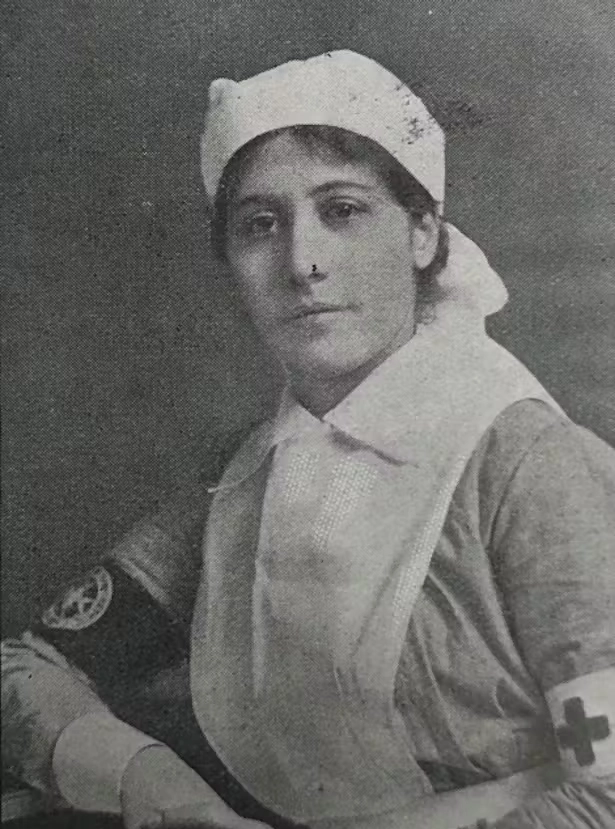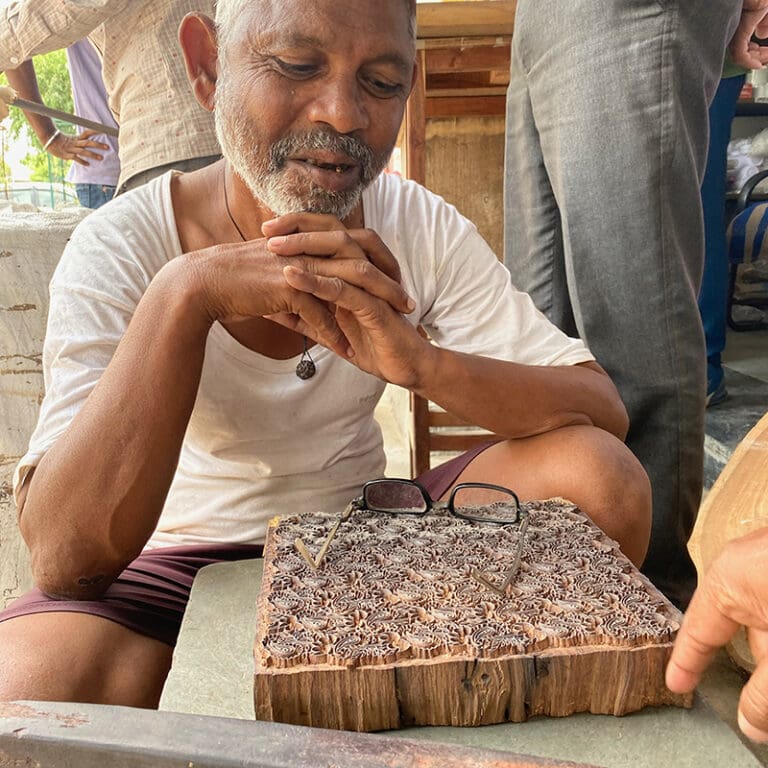

After these years marked by loss and upheaval, Sophia eventually found stability at Hampton Court Palace, where Queen Victoria granted her a grace-and-favour residence. Independent and financially secure, she threw herself into a vibrant life of sport, travel, and society. Yet beneath the privilege, she carried an acute awareness of injustice.
Her travels to India rekindled a deep connection to her heritage and exposed her to the inequalities of empire. Those experiences, paired with her compassion and fierce sense of fairness, set the stage for her transformation from aristocrat to activist, and ultimately, one of Britain’s most remarkable suffragettes.
In the image above, Sophia can be seen outside Hampton Court Palace, standing defiantly as she sells copies of The Suffragette newspaper.





